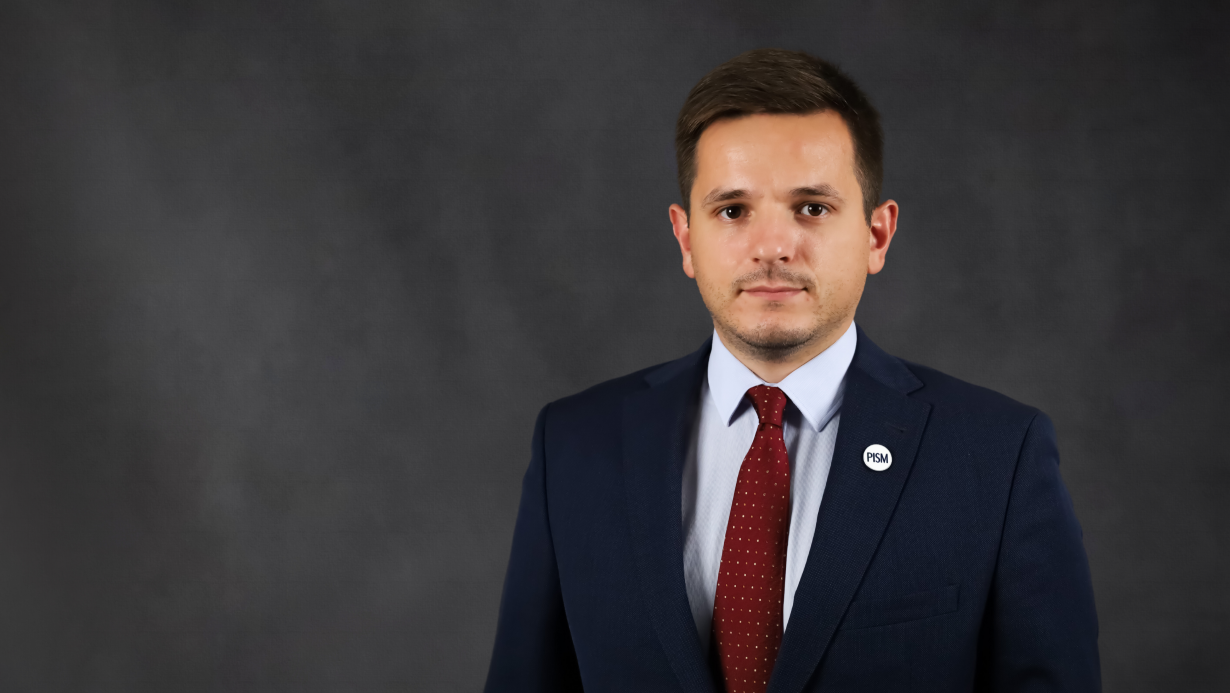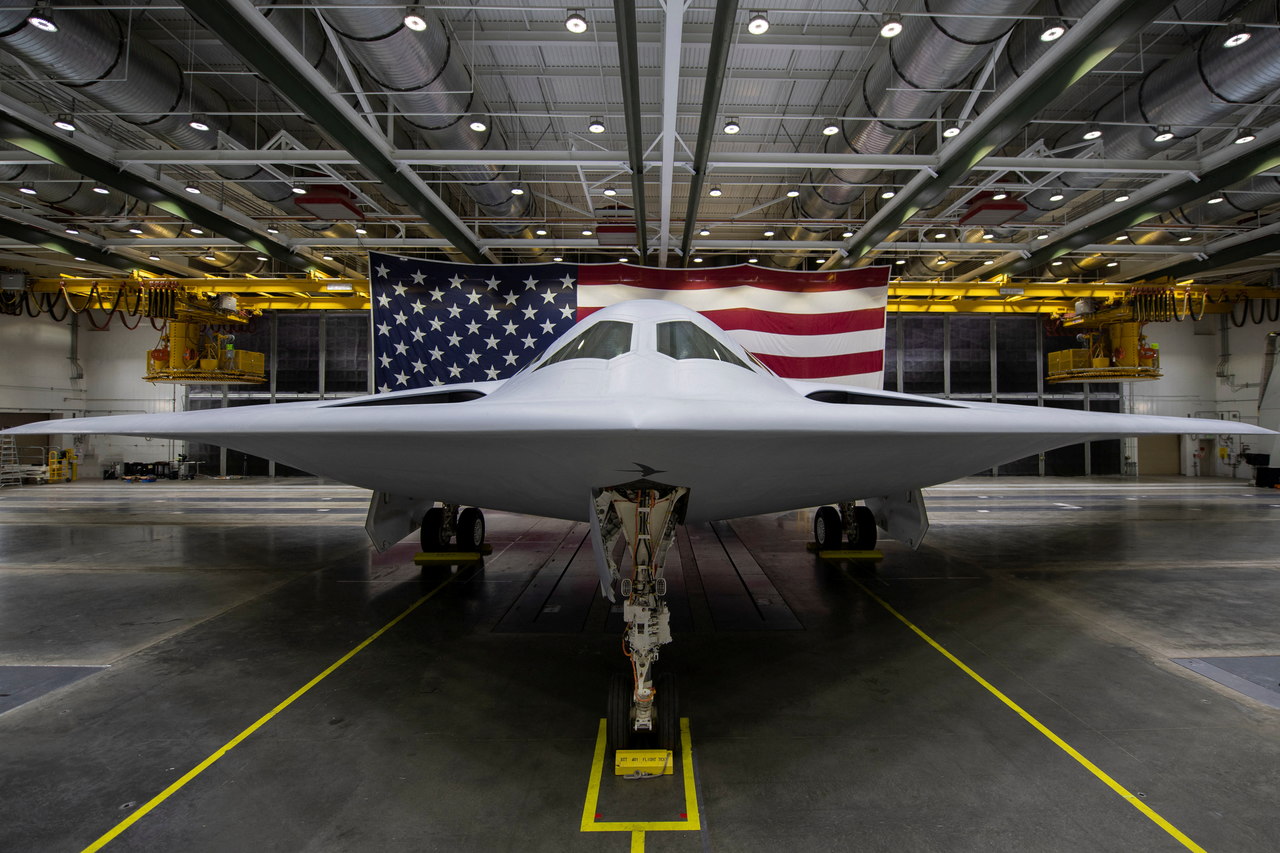Russia Suspends the New START Treaty
Russia’s groundless suspension of the Russia-U.S. Treaty on Measures for the Further Reduction and Limitation of Strategic Offensive Arms (New START) is yet another attempt to intimidate the West with nuclear weapons. By threatening an arms race, Russia seeks to force concessions regarding Ukraine. It is unable, however, to gain meaningful strategic advantage over the U.S. in such a race. It would entail costs for both sides, but they would be more severe for Russia, which is much weaker economically and further weakened by war and sanctions.
 U.S. Air Force / Zuma Press / Forum
U.S. Air Force / Zuma Press / Forum
On 21 February, Russia’s Vladimir Putin announced a suspension of the 2010 New START. The Russian Foreign Ministry followed with a longer statement and the Duma approved the suspension the next day. Russia will not accept American inspections of Russian bases, meant to verify the implementation of New START, although it declares it will comply with the treaty’s limits on strategic nuclear forces. New START permits both countries to deploy up to 700 intercontinental-range ballistic missiles and bombers with up to 1,550 warheads.
Suspension of inspections only confirms the actual state of the affairs, as these visits have been on hold since 2020. The U.S. and Russia agreed then to pause them due to the COVID-19 pandemic (the treaty permits each country to conduct 18 inspections annually). The U.S. wanted to resume inspections in August 2022. Russia opposed this, claiming that its inspectors’ access to bases in the U.S. was hampered by flight restrictions imposed by the U.S. and its allies on Russian aircraft after the full-scale invasion of Ukraine. In fact, the U.S. declared that flights carrying inspectors will be exempted from these restrictions and offered talks in the treaty’s Bilateral Consultative Commission (BCC). In November, however, Russia cancelled the consultations at the last moment. Since then Russia has conveyed, as confirmed by Putin, that inspections and dialogue on New START will not resume as long as the U.S. provides support to Ukraine and seeks to impose “a strategic defeat” on Russia. It is possible that Russia will also stop sharing detailed information on forces covered by the treaty. So far, the U.S. and Russia have exchanged more than 25,000 notifications regarding their forces’ size, composition, and locations.
Russia’s Goals
The suspension of New START is yet another Russian move aimed at stoking fears about increased risk of nuclear war, aimed to coerce Western countries to reduce their support for Ukraine. By suspending the treaty, Russia seeks to intimidate political elites and public opinion in the U.S. and other countries with the possibility that Russia will increase its strategic forces or even formally withdraw from New START, creating the perspective of an arms race. At the same time, Russia does not exclude its return to full implementation of New START, as it claims that the suspension “can be reversed”. In return, it seeks to force American concessions on Ukraine. Russia also might be hoping that even if the U.S. does not make concessions, it will not withdraw from the treaty and breach its limits, at least during President Joe Biden’s term. If the U.S. formally withdraws first, the Russian will surely try to exploit this in its propaganda.
On 21 February, the Russians also made a number of accusations and demands regarding New START that do not concern Ukraine. Although Russia has long aired them, it did not stop it from extending the treaty in 2021. Russia apparently is repeating them now mostly to blame the U.S. for the Russian suspension of the treaty. This includes airing grievances about the treaty not covering the British and French nuclear arsenals (which are many times smaller than the U.S. and Russian forces), or the U.S. enhancing missile defences (although these actually are unable to intercept a large intercontinental strike from Russia). Russia also maintains that the U.S. did not give it a proper opportunity to verify whether the U.S. appropriately modified around 100 bombers and launchers not to carry nuclear weapons and exempted them from treaty limits (the U.S. has been replying for years that these changes were made in line with treaty procedures, and offered further dialogue on the issue).
U.S. Position
The U.S. has not changed its stance on supporting Ukraine, as was reiterated by Biden in a speech in Warsaw hours after Putin’s remarks. Neither has the Biden administration announced a withdrawal from New START. The U.S. president referred to the suspension only by calling it a “big mistake”. Secretary of State Anthony Blinken said that the U.S. will monitor further Russian actions and signalled readiness to respond, but also to discuss the future of the treaty. Blinken noted that it is important for the U.S. to act “responsibly” and that the “rest of the world” expects it from the U.S.
The Biden administration does not want to escalate tensions and appears to hope that Russia will return to full compliance, or at least will not exceed the treaty limits. Biden has long attached great value to arms control. Shortly after taking office, Biden approved an unconditional extension of New START for the longest possible period of five years (otherwise the treaty would have expired in February 2021). This January, the U.S. State Department ruled that Russia was in non-compliance with the treaty by not accepting inspections and refusing to hold the BCC meetings. The report added that, due to the inability to inspect Russian missiles, the U.S. was unable to determine whether Russia complied with the warheads limit, although it assessed that Russia was likely still below the treaty ceiling. The report did not question Russian compliance with limits on strategic delivery vehicles.
Calls for a stronger U.S. reaction are coming from Republicans, many of whom have long criticised New START. This criticism stems in part from a fact that the treaty does not limit the large Russian arsenal of non-strategic nuclear weapons nor its Burevestnik cruise missiles or Poseidon underwater drones (both systems have nuclear propulsion and intercontinental range and are under development). While Biden sought to first extend New START and then negotiate arrangements addressing these issues, the Trump administration made its extension conditional upon Russia accepting verifiable limitations for all of its nuclear forces (which Russia rejected). Moreover, there are growing voices that the U.S. will need larger nuclear forces than permitted under New START in order to respond to the substantial build-up of the Chinese nuclear arsenal.
Conclusions and Perspectives
The Biden administration will be reluctant to walk away from New START but will be under growing pressure to do so. The U.S. still has other means to monitor the Russian nuclear forces, especially reconnaissance satellites, but the lack of inspections (and possibly information exchanges) reduces U.S. insight. Unsure of whether Russia has breached New START limits, the U.S. may in time decide that it is better to leave the treaty and enhance its own strategic nuclear forces. Even if neither country withdraws from New START before its expiration in 2026, Russian non-compliance further reduces the already small chances that another treaty will be negotiated and approved by Congress by that time.
Therefore, expansion of U.S. and Russian strategic forces is likely, although the timeframe and scale are unclear. An arms race may be a substantial burden to the budgets of both countries, but it will be much more severe for Russia, which is much weaker economically and additionally weakened by sanctions and the need to pay for the conventional war against Ukraine. Both sides might seek to build up their forces, at least to keep the other side from achieving strategic superiority, understood as the ability to destroy all of an adversary’s nuclear forces in a first strike. Given this and the size of the existing nuclear arsenals of such countries, neither one can count on acquiring such an advantage.
The Russian stance on New START only confirms that the priority for NATO countries should be to strengthen deterrence and defence and counter aggressive Russian actions, especially by supporting Ukraine. Russia is betting on confrontation to such an extent that it endangers New START, which it strongly cared about and which until recently was one of the few agreements it did not violate. Perhaps only in the longer term will Russia be more willing to engage on arms control in good faith, when faced with increased U.S. arsenal. It will be important for NATO that potential increases in U.S. spending on strategic forces should be in addition to, not at the expense of, investments in U.S. conventional and nuclear forces in Europe.




%20(1).png)
